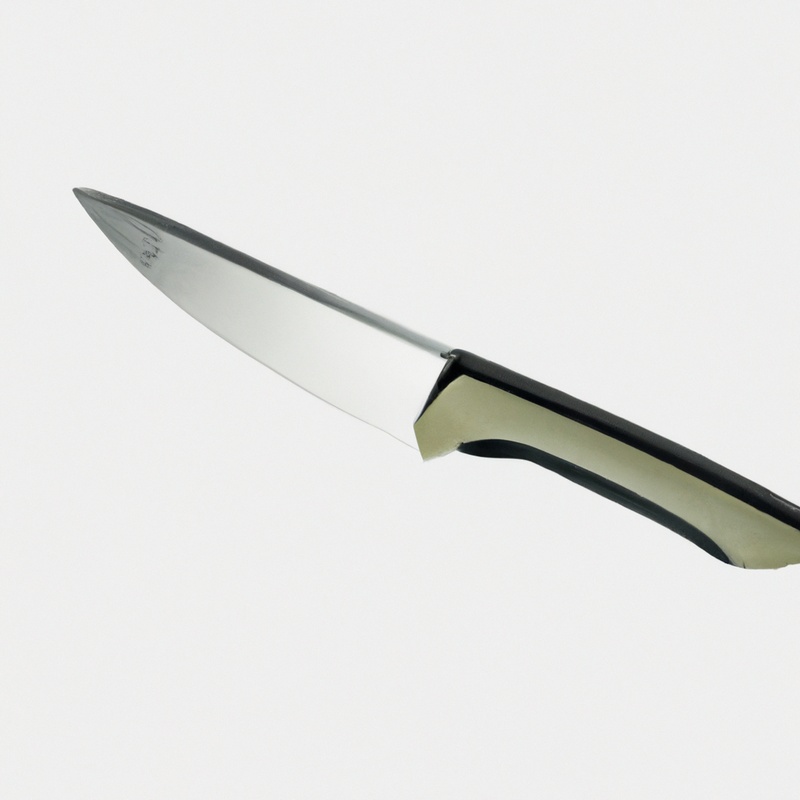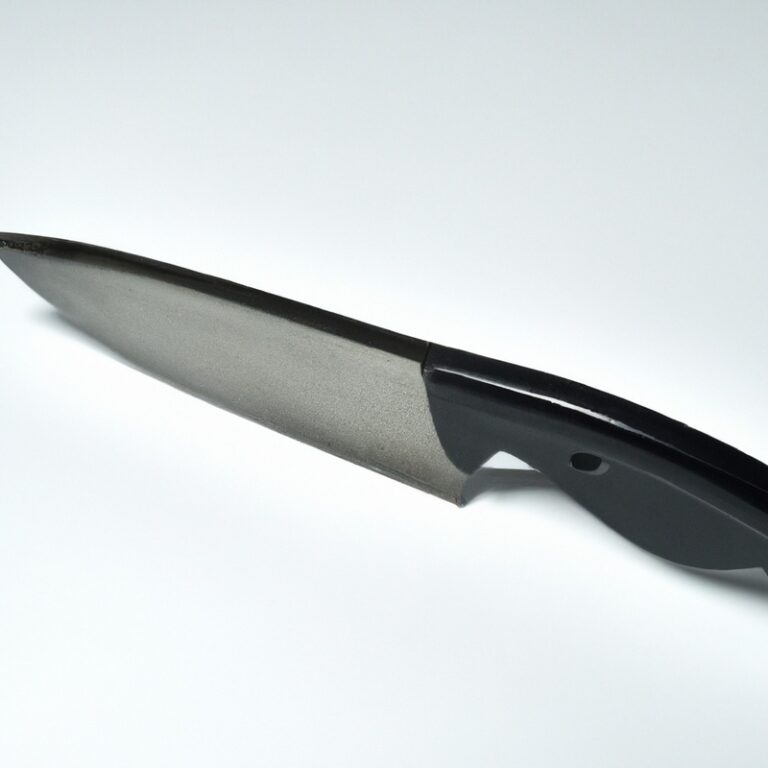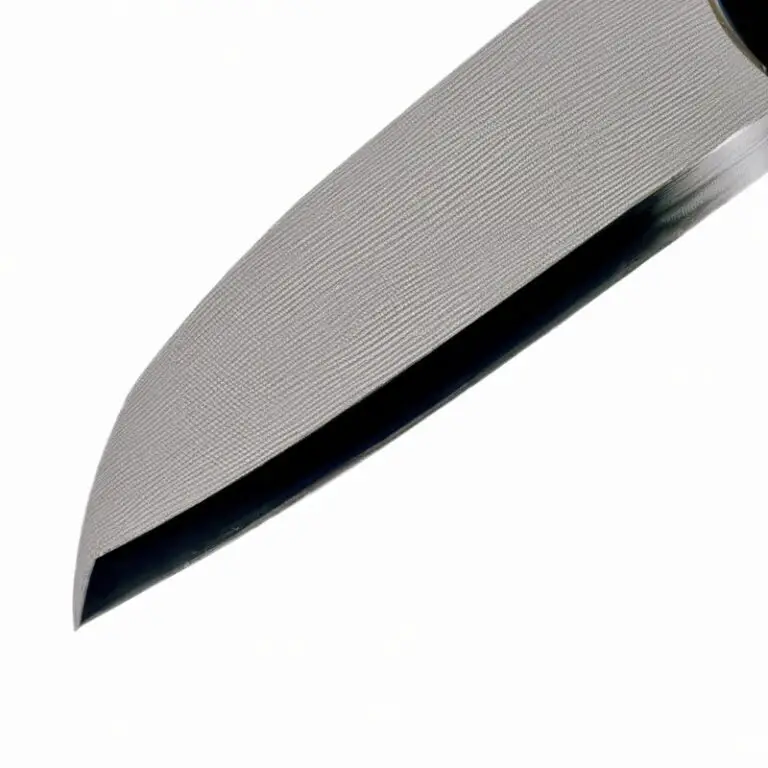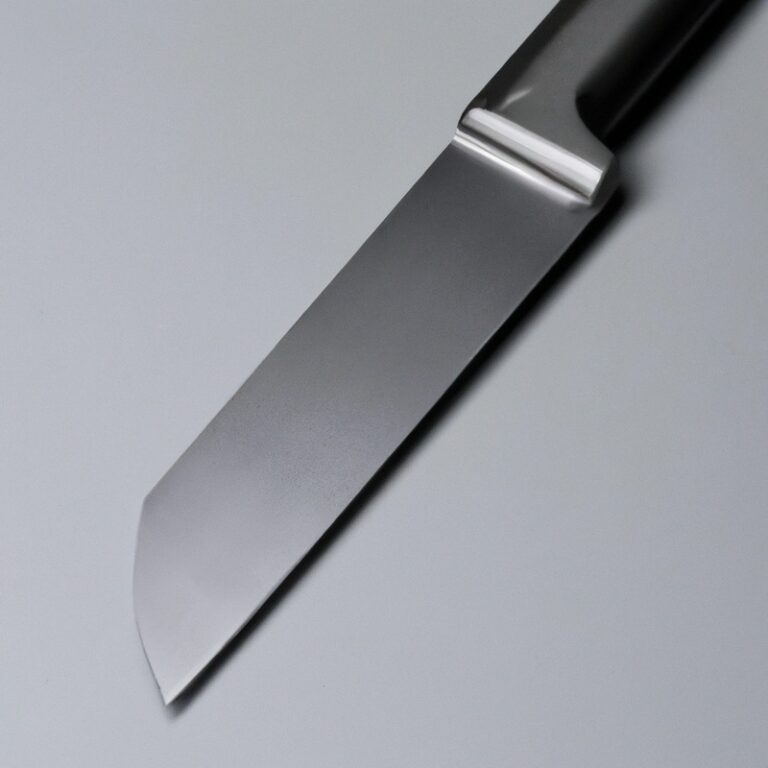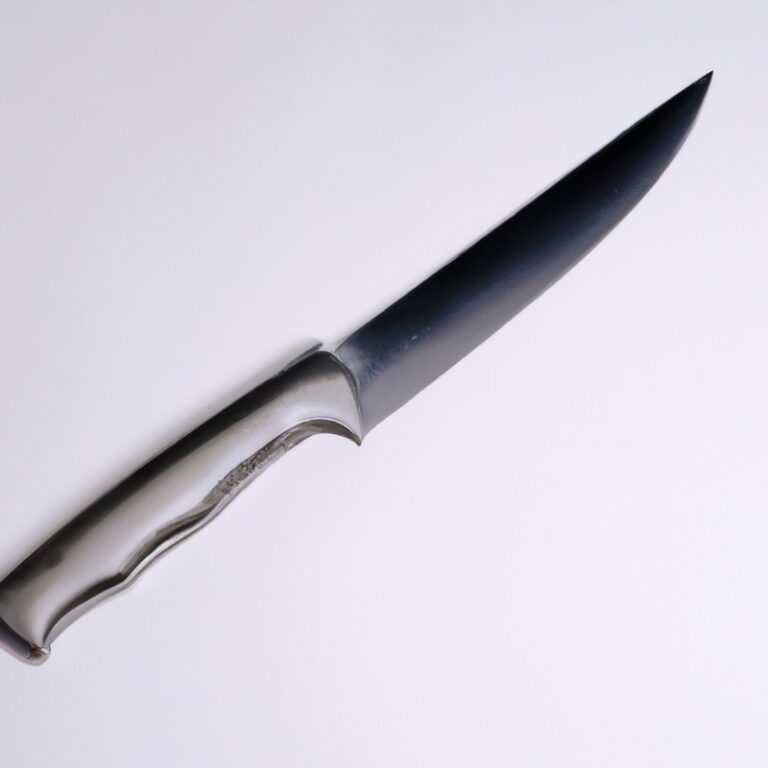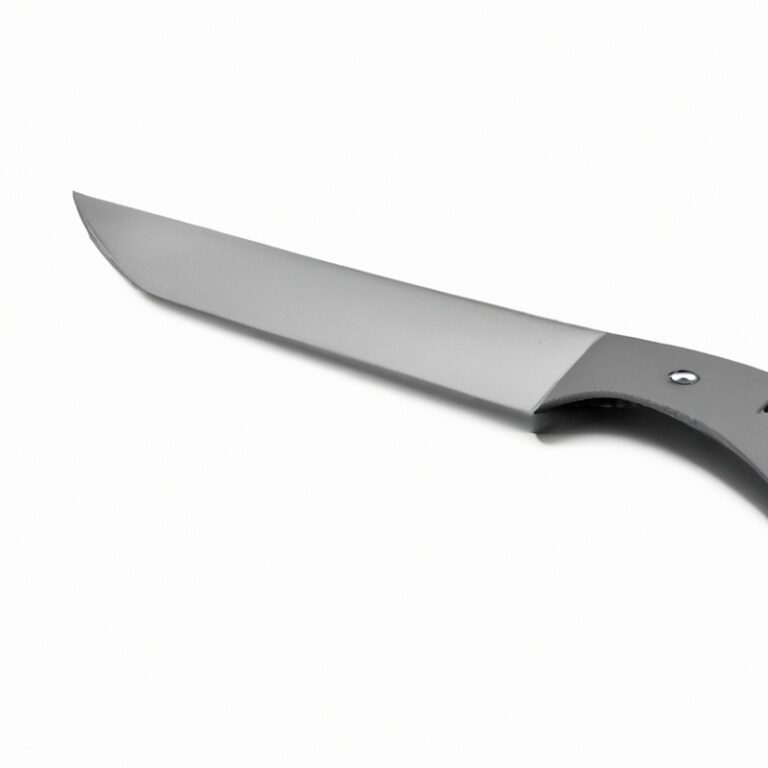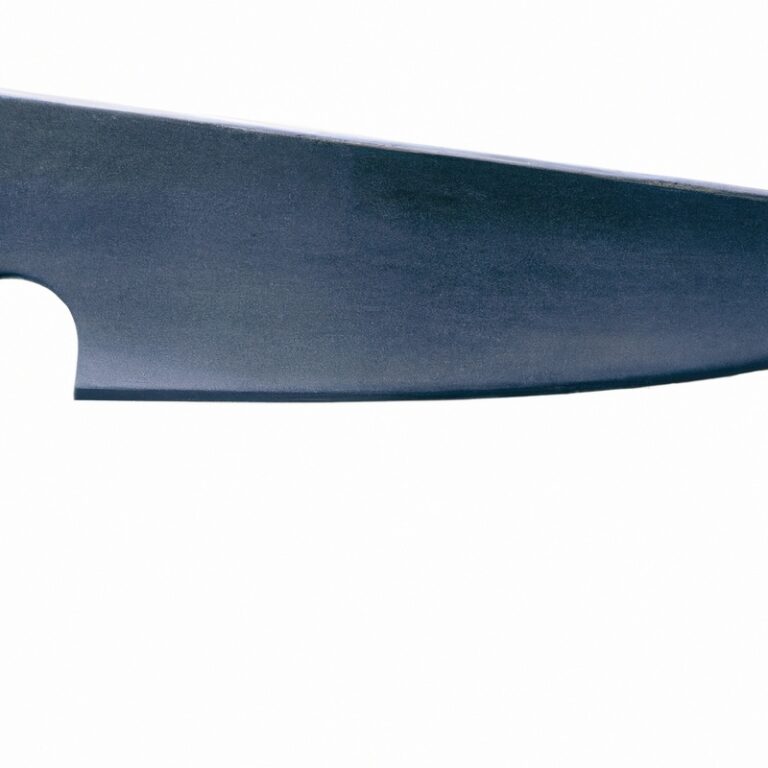How Can I Effectively Clean And Care For My Serrated Knife To Prevent Rust Or Corrosion?
Key Takeaways:
- Dry your serrated knife immediately after use to prevent rust and corrosion.
- Regularly oil the blade to protect it from moisture and maintain its sharpness.
- Avoid washing your serrated knife in the dishwasher, as it can damage the blade.
- Use a soft brush or cloth to remove any food particles stuck in between the teeth of the serrated blade.
Are you tired of seeing your favorite serrated knife succumb to the relentless grip of rust and corrosion? Well, you’re not alone.
As a self-proclaimed culinary aficionado, I’ve struggled with this issue myself.
That’s why I’ve poured hours of research into discovering the best methods for cleaning and caring for a serrated knife, ensuring its longevity and pristine condition. In this guide, I’ll walk you through the ins and outs of serrated knives, share pro tips for effective cleaning, and unveil the secrets to preventing rust and corrosion.
So, get ready to revitalize your trusty blade and keep it gleaming like new.
| Step | Cleaning Process | Caring Process |
| 1 | Use mild soap and water to clean the blade. | Keep the knife dry by wiping it thoroughly after cleaning. |
| 2 | Avoid soaking the knife in water for long periods. | Store the knife in a dry place to prevent moisture buildup. |
| 3 | Use a soft brush or sponge to remove any food particles stuck in the serrations. | Regularly oil the blade using a food-safe lubricant to prevent rust. |
| 4 | Avoid using abrasive cleaners or scouring pads that may damage the blade. | Sharpen the serrated edge using a specialized serrated knife sharpener. |
| 5 | Always dry the knife before storing it to prevent rust or corrosion. | Use the knife only on appropriate cutting surfaces to avoid unnecessary wear. |
Understanding the Design and Purpose of a Serrated Knife
What is a serrated knife?
A serrated knife is a type of kitchen knife that features a saw-like edge with small, pointed teeth. These teeth allow the knife to easily cut through tough and fibrous foods such as bread, tomatoes, and meat.
The serrations grip and tear the food, providing a clean and efficient cut.
Serrated knives are highly versatile and can be found in various sizes and shapes to suit different cutting tasks. They are a valuable tool in any kitchen due to their ability to tackle difficult-to-cut foods with ease.
Benefits of using a serrated knife
When it comes to using a serrated knife, there are several benefits to consider. Firstly, the serrated edge of the knife helps to grip and cut through tough and crusty surfaces with ease, such as bread or tomatoes.
This makes it ideal for tasks that require a sawing motion.
Secondly, the serrations help to prevent delicate foods from getting crushed or squished while cutting, ensuring clean and precise slices. Lastly, the serrated blade tends to require less sharpening compared to straight-edged knives, making it low-maintenance and convenient.
Overall, a serrated knife can be a valuable addition to your kitchen toolkit.
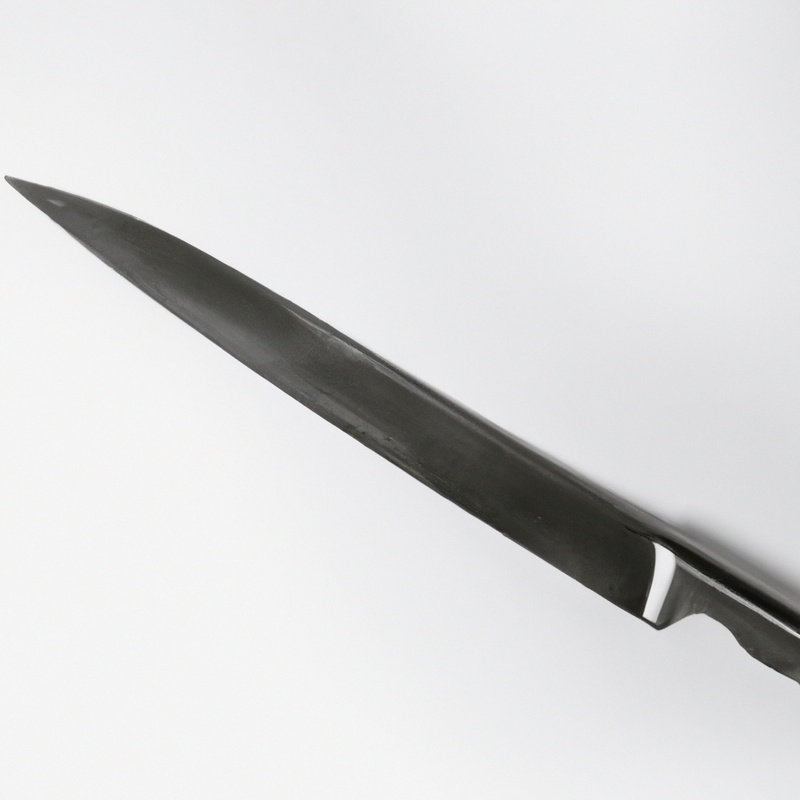
Impact of rust or corrosion on a serrated knife
Rust or corrosion can have a significant impact on a serrated knife. It can damage the sharpness of the serrations, making the knife less effective for cutting tasks.
Additionally, rust or corrosion can weaken the blade, leading to a higher risk of breakage or bending.
The appearance of rust or corrosion on a serrated knife can also be unappealing and may indicate neglect in maintenance. Regular cleaning and proper storage are crucial to prevent rust or corrosion and preserve the functionality of your serrated knife.
Methods for Cleaning a Serrated Knife
Gather necessary cleaning supplies
To effectively clean your serrated knife, you’ll need a few essential cleaning supplies on hand. Here’s what you’ll need:
- Mild dish soap or a specialized knife cleaner: Choose a gentle soap or cleaner that won’t harm the knife’s blade or handle.
- Warm water: Use warm water to create a soapy solution for cleaning the knife.
- Soft-bristled brush or cloth: A soft-bristled brush or cloth will help you safely remove any food particles or debris from the serrations of the knife.
- Toothpicks or cotton swabs: These can be useful for cleaning hard-to-reach areas and removing stubborn residue.
- Towel or paper towels: Have a towel or paper towels handy for drying the knife after cleaning.
By having these supplies ready, you’ll be well-prepared to clean your serrated knife effectively and keep it in great condition.
Step-by-step guide for cleaning a serrated knife
To effectively clean a serrated knife, follow these simple steps:
- Start by rinsing the knife under warm water to remove any loose dirt or debris.
- Apply a small amount of dish soap or mild detergent to a soft sponge or cloth.
- Gently scrub the blade, paying special attention to the serrated edges. Be careful not to scrub too hard and damage the teeth.
- Rinse the knife thoroughly with warm water to remove any soap residue.
- Dry the knife completely with a clean towel to prevent moisture from causing rust or corrosion.
- For stubborn stains or residue, you can use a toothbrush or a toothpick to carefully clean between the serrations.
- Remember to avoid using abrasive cleaners or harsh chemicals that can damage the knife’s finish.
- Lastly, store your clean serrated knife in a dry place, away from moisture or humidity, to maintain its condition.
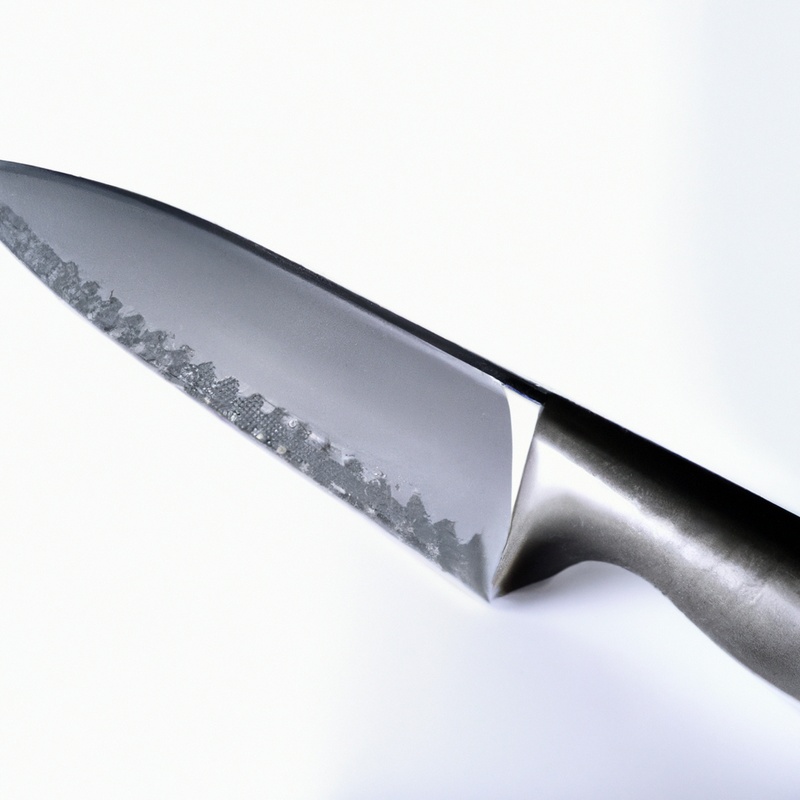
Maintaining a Serrated Knife to Prevent Rust or Corrosion
Proper storage to prevent rust or corrosion
To prevent rust or corrosion on your serrated knife, proper storage is essential. Here are a few tips:
- Keep your knife clean and dry before storing it. Any moisture left on the knife can lead to rust or corrosion over time.
- Store your knife in a dry environment with low humidity. Avoid storing it in areas like the kitchen sink or near water sources.
- Use a knife block, sheath, or blade guard to protect the serrated edges from coming into contact with other knives or objects.
- Avoid storing your knife in a drawer where it can bump against other utensils and potentially damage the blade.
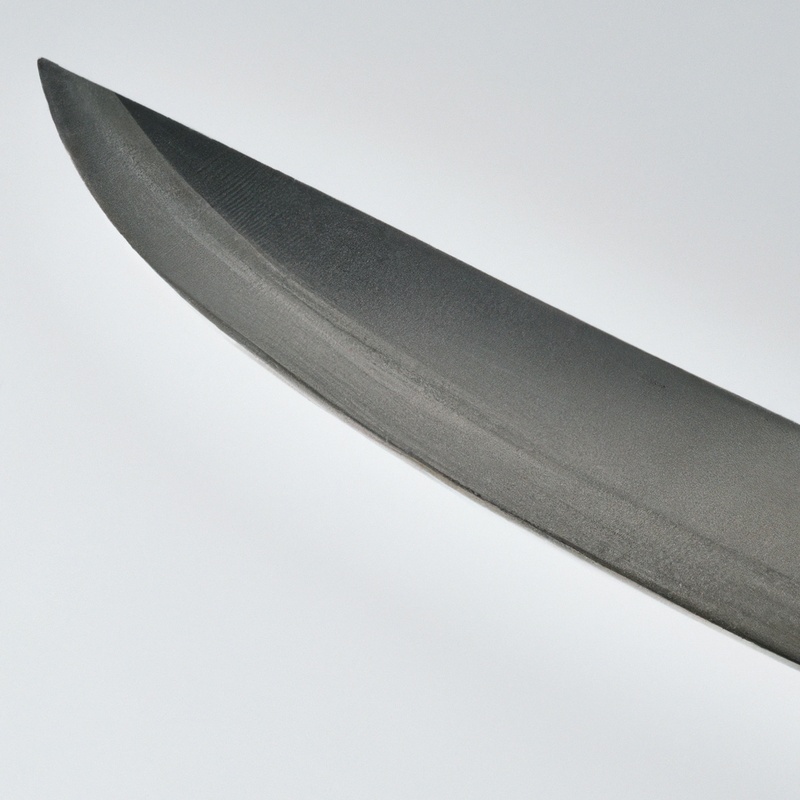
Regular inspection and maintenance routines
Regular inspection and maintenance routines are essential for keeping your serrated knife in optimal condition. Here are some tips to help you stay on top of maintenance:
- Inspect your knife regularly for any signs of rust or corrosion. Look for discoloration or pitting on the blade.
- Clean your knife after each use to remove any food residue or moisture that may lead to rust. Use mild soap and warm water, and be sure to dry it thoroughly.
- Apply a food-grade knife oil or lubricant to the blade regularly to prevent rust. Simply wipe a small amount on the blade and let it absorb before storing the knife.
- Sharpen your serrated knife as needed to maintain optimal cutting performance. You can use a serrated knife sharpener or take it to a professional.
- Store your serrated knife in a dry place, away from moisture and humidity. Consider using a knife block, magnetic strip, or a protective sheath to keep it safe.
By incorporating these regular inspection and maintenance routines into your knife care routine, you can prolong the lifespan of your serrated knife and ensure it performs at its best.
Tips for removing rust or corrosion from a serrated knife
To remove rust or corrosion from a serrated knife, you can follow these simple tips:
- Use a rust remover or a vinegar solution to soak the knife for a few minutes.
- Gently scrub the affected areas with a soft brush or sponge.
- Rinse the knife thoroughly with water to remove any residue.
- Dry the knife completely with a clean towel.
- Apply a thin layer of food-grade oil or knife oil to protect the metal from future rust or corrosion.
Remember to take precautions and avoid using harsh chemicals or abrasive materials that may damage the knife’s serrated edges. Regular maintenance and proper storage will also help prevent rust and corrosion in the future.
Avoiding Common Mistakes and Pitfalls
Mistakes to avoid when cleaning a serrated knife
One common mistake to avoid when cleaning a serrated knife is using a dishwasher. The high heat and harsh detergents can damage the knife blade and handle, leading to rust or corrosion.
Another mistake is neglecting to dry the knife thoroughly after cleaning.
Moisture can promote rust, so it’s important to towel dry the knife and ensure there is no residual moisture. Additionally, using abrasive cleaners or scrub brushes can scratch the knife, compromising its performance and increasing the risk of rust.
So, opt for mild soap, a soft cloth, and gentle scrubbing to clean a serrated knife effectively.
Pitfalls to watch out for when maintaining a serrated knife
When maintaining a serrated knife, there are some common pitfalls to watch out for. One of the biggest mistakes is using harsh or abrasive cleaners, as they can damage the serrations and the blade.
It’s also important to avoid soaking the knife for extended periods, as this can promote rust or corrosion.
Additionally, be careful not to neglect regular maintenance, such as sharpening and oiling the blade. Lastly, improper storage can lead to damage, so make sure to store your knife in a dry and secure place.
Keep these pitfalls in mind to ensure the longevity and effectiveness of your serrated knife.
Final Verdict
Maintaining and caring for a serrated knife is essential to prevent rust or corrosion and ensure its longevity. By understanding its design and purpose, using the right cleaning methods, and implementing regular maintenance routines, you can keep your serrated knife in optimal condition.
Remember to avoid common mistakes and pitfalls, such as using abrasive materials or neglecting proper storage.
With the right knowledge and techniques, you can enjoy the benefits of a sharp and durable serrated knife for years to come.

